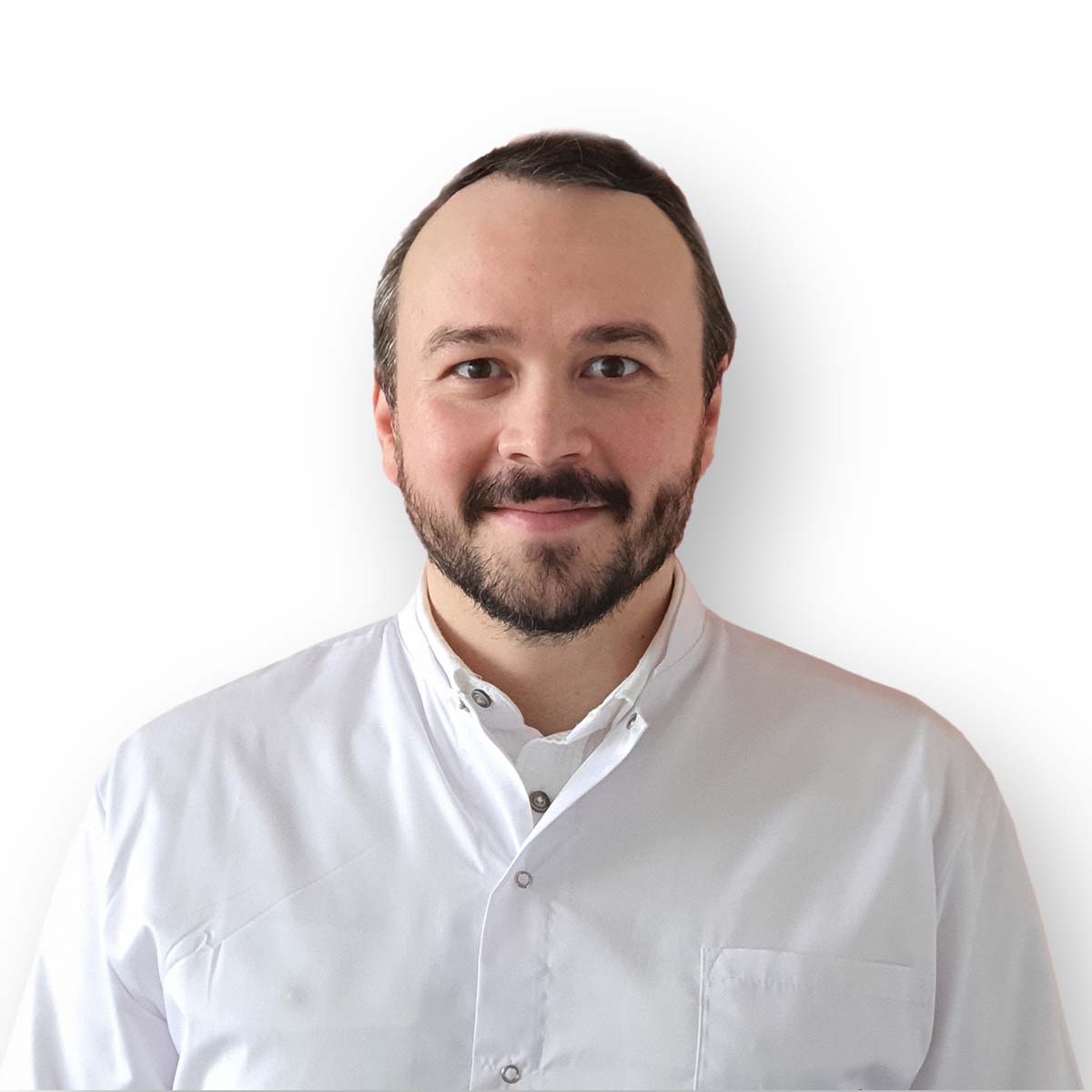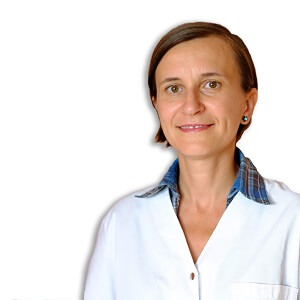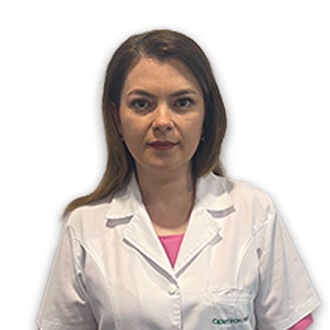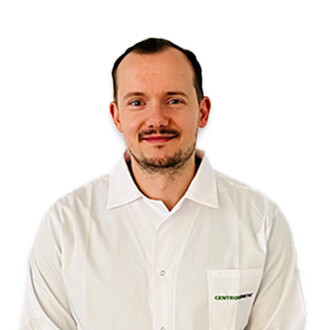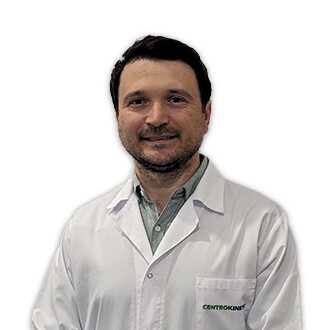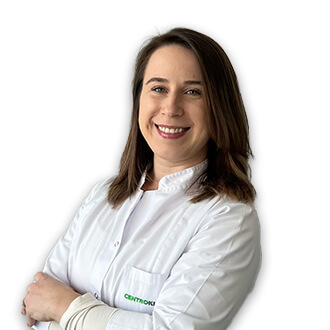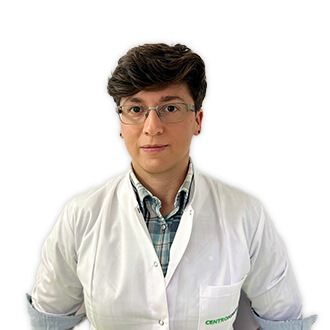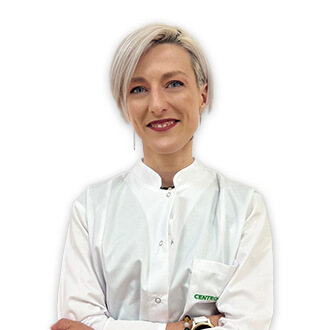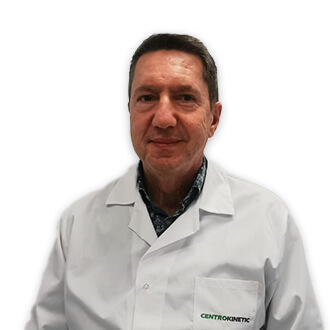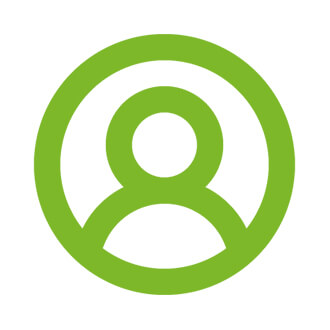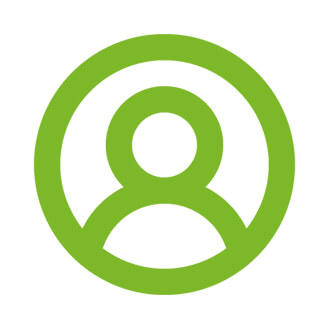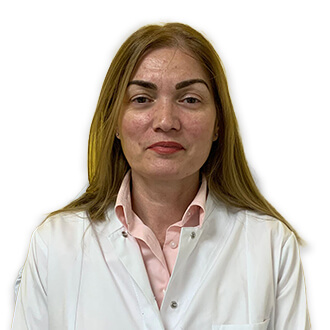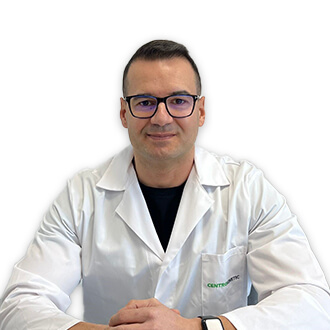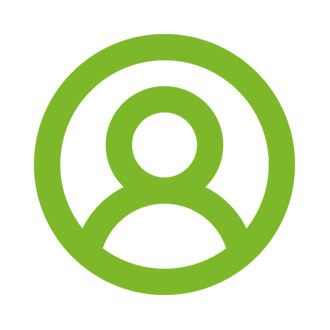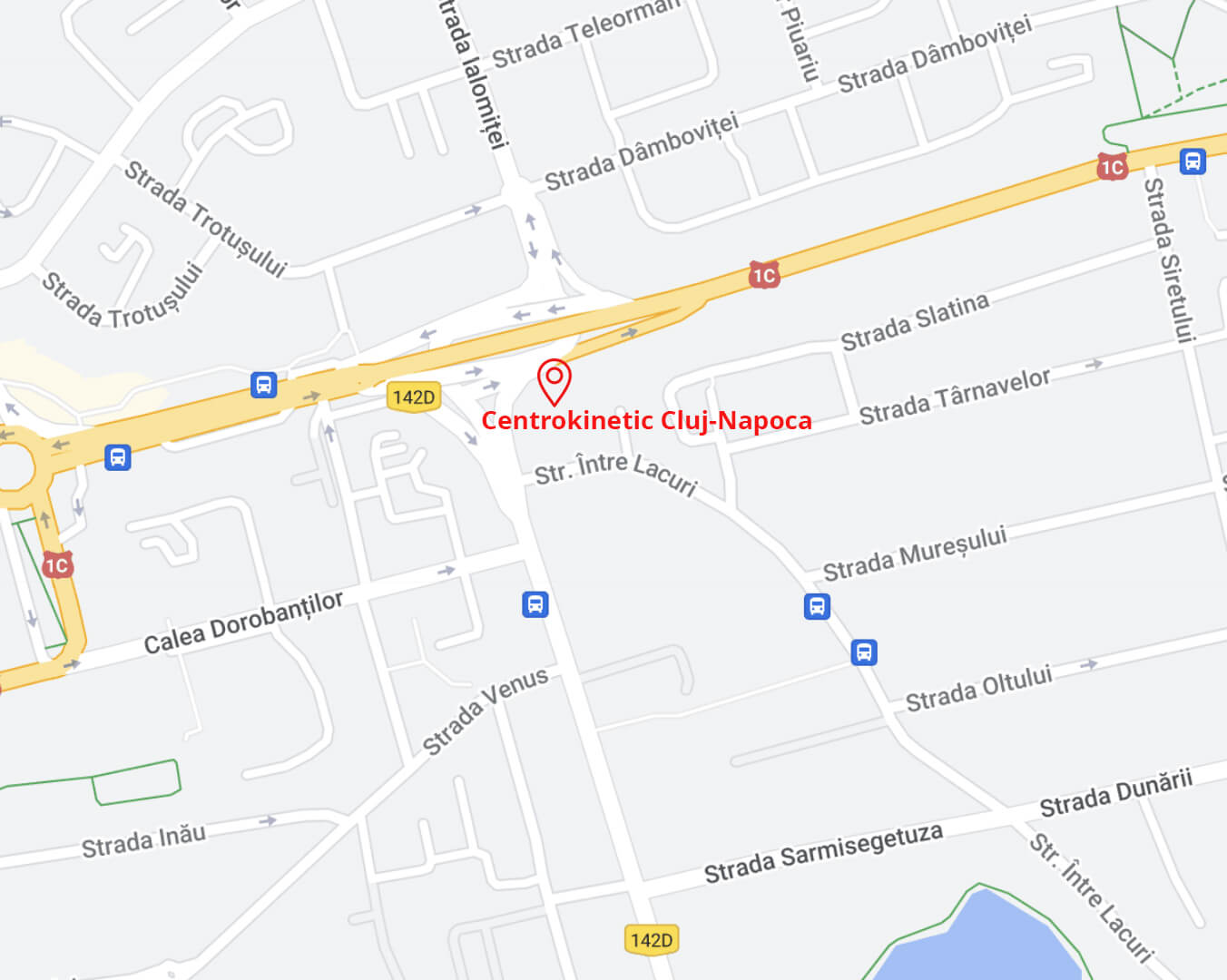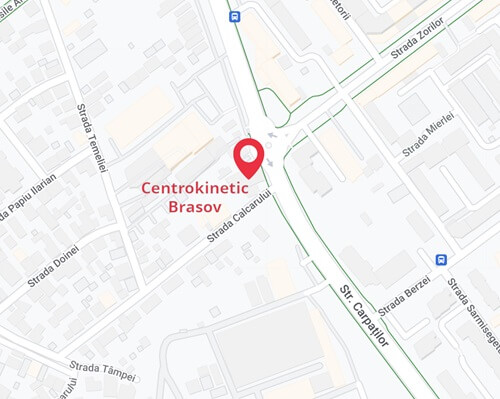Temporomandibular Joint (TMJ) – Recovery Protocol
.jpg)
The temporomandibular joint (TMJ) is involved in both chewing and speaking, being one of the most frequently moved joints throughout life. This synovial joint must be able to respond to significant biomechanical loads.
a) Articular Surfaces
On the temporal side, we have the mandibular fossa and the articular tubercle. The mandibular fossa is a semielipsoidal depression with an axis oriented obliquely from front to back and from outside to inside. The articular tubercle is a convex prominence from front to back and slightly concave transversely. It is covered by a thin layer of fibrocartilage, while the bottom of the mandibular fossa is covered by periosteum.
On the mandibular side, there is a condyle – the head of the mandible, which is ellipsoidal in shape, with a small axis of 9-10 mm and a large axis of 18-20 mm. Each condyle is located at the postero-superior part of the mandibular ramus and is connected to it by a narrower portion called the neck. On each mandibular head, two inclined parts can be observed: one anterior and the other posterior, forming a ridge parallel to the large axis of the mandibular head.
The articular disc is a fibrocartilage developed between the articular surfaces to establish concordance between them. It is elliptical in shape, thicker at the periphery (2-4 mm) and thinner in the central part. It has a concave lower face corresponding to the convexity of the mandibular head and a superior face shaped like an S in sagittal section. It is concave in front, where it corresponds to the articular tubercle, and convex behind, where it comes into contact with the mandibular fossa. In various movements of the mandible, the articular disc accompanies the mandibular head due to its closer relationships with it than with the mandibular fossa.
b) Means of Union
These are represented by a capsule reinforced on the lateral side by a ligament. They are complemented by the stylo- and sphenomandibular ligaments, which are two fibrous bands.
The capsule has the shape of a sleeve surrounding the joint, with two insertion circumferences and two surfaces. The superior circumference inserts in front on the anterior margin of the articular tubercle, behind on the bottom of the mandibular fossa in front of the petrotympanic fissure Glaser, laterally on the longitudinal root of the zygomatic process, and medially on the base of the sphenoid spine. The inferior circumference inserts on the neck of the mandible.
The articular capsule is formed of two types of fibers: some long, stretched from the mandible to the temporal, and others short, from the temporal to the periphery of the disc or from the disc to the mandible. On this portion, as well as on the articular disc, the lateral pterygoid muscle inserts. The articular capsule is thinner and looser anteriorly and thicker posteriorly. At this level, in addition to conjunctive fibers, there are also a number of elastic fibers forming the posterior band of the capsule. It performs a dual role:
- to limit the forward displacement of the disc and mandibular head during the downward movement;
- to return them to their initial place when the mandible returns to the normal position.
The lateral ligament is short and thick, constituting the main means of reinforcing the articular capsule. It inserts upwards on the longitudinal root of the zygomatic process and on the tubercle at its origin, and downwards on the postero-external part of the mandibular neck. Its anterior fibers oppose the backward displacement of the condyle.
The medial ligament is triangular, inconsistent, and much thinner than the previous one. It inserts upwards near the sphenoid spine, and downwards on the posteromedial part of the mandibular neck. As accessory ligaments, the sphenomandibular and stylomandibular ligaments are described, without attributing them any significant role in joint mechanics.
c) Movements of the Temporomandibular Joint
- Up and down movements
- Forward and backward movements (protrusion and retrusion)
- Lateral movements
d) Muscles Involved in TMJ Movements
- Muscles involved in raising the mandible: temporalis, masseter, medial pterygoid
- Muscles involved in lowering the mandible: lateral pterygoid, suprahyoid, infrahyoid
Temporomandibular Joint Disorders
Temporomandibular joint disorders can have various causes, including:
- Intra-articular causes: inflammation, internal structural changes, degeneration
- Extra-articular causes: muscle imbalances at the cervical spine level, overloading of the masticatory muscles
These disorders require a thorough examination to establish a personalized treatment plan.
a) Intra-articular Causes
Inflammatory conditions of the TMJ are often caused by direct trauma (jaw blows) or indirect trauma (whiplash injuries), bruxism, or loss of dental height.
Two common inflammatory conditions of the TMJ are:
- Synovitis: inflammation of the synovium, leading to pain at rest and limited joint movements
- Retrodiscitis: inflammation of the retrodiscal tissue, causing deviation of the mandible from the affected side to the healthy side, both at rest and when opening the mouth
Internal disorders include:
- Disc displacement with reduction: the articular disc can be displaced anteriorly. During movement, the disc is pushed forward but can reposition itself later, leading to a "click" sound and deviation of the mandible towards the affected side.
- Disc displacement without reduction: the disc does not reposition, causing pain and severe limitation of joint mobility. The mandible deviates towards the affected side without the presence of an articular click.
Arthritis can be observed with the help of X-rays or MRI, showing flattening of the condylar head and osteophytes.
Hypermobility can cause the anterior projection of the mandible and the articular disc, leading to deviation of the mandible to the affected side and occasionally to joint noises and pain.
b) Extra-articular Causes
Muscle spasm (trismus) is frequently encountered and can affect one or more masticatory muscles (masseter, temporalis, pterygoid). Causes include keeping the mouth open during dental work, stress, bruxism, or vertebral static disorders.
Temporal muscle tendinopathy occurs due to excessive contraction, being common in people with bruxism.
Mandibular fractures can occur at the level of the mandibular symphysis or condyle, often associated with fractures or dislocations of the condyles.
Temporomandibular Joint Treatment
Although temporomandibular joint disorders are recurrent, most often, they tend not to be progressive. Physical-kinetic treatment has been proven in numerous studies to have beneficial effects on the patient's health, regardless of the severity of their symptoms. Most patients suffering from a temporomandibular joint disorder will see improvement after approximately 3 or 6 weeks of starting conservative treatment.
There are several treatment options, but it is necessary for the patient to receive an individualized treatment plan. We can discuss the following treatment options:
- Anti-inflammatory drugs and muscle relaxants;
- Physical therapy consisting of performing specially chosen and personalized exercises to regain the physiological movements of the joint and to stretch/tone the muscles identified as hyper- and hypotonic.
- Physiotherapy (TENS, Laser, TECAR);
- Massage/Manual Therapy/IASTM for both the temporomandibular joint and the cervical spine, given the close relationship between the two regions.
- Botulinum toxin injections may help in cases of severe pain;
- Orthodontic treatment;
- Surgical intervention when all the above options have not provided the desired results, and the patient still reports increased intensity pain.
1. Recovery Exercises
The exercises presented should always be combined with cervical spine and reposture exercises, and where necessary, with facial mimicry exercises. It is advisable NOT to exaggerate the number of repetitions/sets, given the inflammation at the joint level. The temporomandibular joint should not be forced! Too many repetitions can exhaust the facial muscles and increase inflammation at the joint level. If it is necessary to increase the number of repetitions, this should be done gradually, considering the patient's condition.
A. Relaxation of periarticular muscles
- Place the tongue behind the upper teeth, letting the jaw move away from the maxilla slowly, without contracting the muscles and without separating the lips.
- Dosage: as often as possible throughout the day.
B. “Goldfish” (partial opening)
- Place the tongue on the roof of the mouth, one finger in front of the temporomandibular joint and the index finger of the opposite hand on the chin. Lower the jaw to half the range of motion, hold isometrically for 3 seconds, then lift, closing the mouth. During the exercise, a slight tension should be felt, not pain. An alternative to this exercise is to place both fingers on each temporomandibular joint.
- Dosage: 10 repetitions, 2 sets
C. “Goldfish” (full opening)
- Place the tongue on the roof of the mouth, one finger in front of the temporomandibular joint and the index finger of the opposite hand on the chin. Lower the jaw to the maximum range of motion, hold isometrically for 3 seconds, then lift, closing the mouth. During the exercise, a slight tension should be felt, not pain. An alternative to this exercise is to place both fingers on each temporomandibular joint.
- Dosage: 10 repetitions, 2 sets
D. Chin tucks
- In standing or sitting, retract the shoulder blades and reduce the cervical lordosis, giving the impression of forming a "double chin". Hold isometrically for 3 seconds.
- Dosage: 10 repetitions, 2 sets
E. Mouth opening with resistance
- With one hand under the jaw, open the mouth. Hold for 3-6 seconds and close slowly.
- Dosage: 10 repetitions, 2 sets
F. Mouth closing with resistance
- Hold the chin with the thumb and index finger and slowly close the mouth.
- Dosage: 10 repetitions, 2 sets
G. Mouth opening with the tongue on the roof of the mouth
- Place the tongue on the roof of the mouth and slowly open the mouth, hold for 3 seconds, and slowly return to the initial position.
- Dosage: 10 repetitions, 2 sets
H. Lateral movements
- Slightly open the mouth and make slow lateral movements.
- If the exercise becomes too easy, hold a coffee stick/tongue depressor between the teeth and slowly make the lateral movement. Over time, the height of the object held between the teeth can be increased.
Dosage: 10 repetitions, 2 sets
I. Protrusion movement (anterior projection)
- Slightly open the mouth and make slow anterior projection movements.
- If the exercise becomes too easy, hold a coffee stick/tongue depressor between the teeth and slowly make the protrusion movement. Over time, the height of the object held between the teeth can be increased.
Dosage: 10 repetitions, 2 sets
J. Tongue exercises
- With the mouth slightly open and the tongue on the palate, move the tongue backward while maintaining contact with the palate. Hold for 3 seconds.
- With the mouth slightly open, move the tongue laterally until it touches the cheek. Hold for 3 seconds.
Dosage: 10 repetitions for each movement, 2 sets
K. Opening with the tongue on the lower teeth
- Place the tongue on the lower teeth, open the mouth while holding isometrically for 3 seconds and perform a chin tuck.
Dosage: 10 repetitions, 2 sets
L. Self-massage
- Place the index and middle fingers on the masseter bilaterally, apply pressure, and slide caudally and caudal-anteriorly to the mandible.
- Place the index and middle fingers on the masseter bilaterally, apply slight pressure, and slowly open the mouth.
- Repeat the movement keeping the fingers on the temporal muscle.
- Place the thumbs under the occiput bilaterally and make small circles in both directions.
Dosage: 10-15 slow repetitions
M. Neck muscle stretching
Advice for patients:
- Do NOT chew gum. If necessary, do not exceed 15 minutes of chewing per day.
- Limit/eliminate consumption of hard foods (nuts, apples, etc.).
- Do NOT chew pens/pencils involuntarily during work/study.
- Avoid nail-biting/thumb-sucking.
- Do NOT rest the head/chin on the palm.
- Avoid chewing on one side only.
BUCHAREST TEAM
CLUJ NAPOCA TEAM
BRASOV TEAM
MAKE AN APPOINTMENT
FOR AN EXAMINATION
See here how you can make an appointment and the location of our clinics.
MAKE AN APPOINTMENT


























